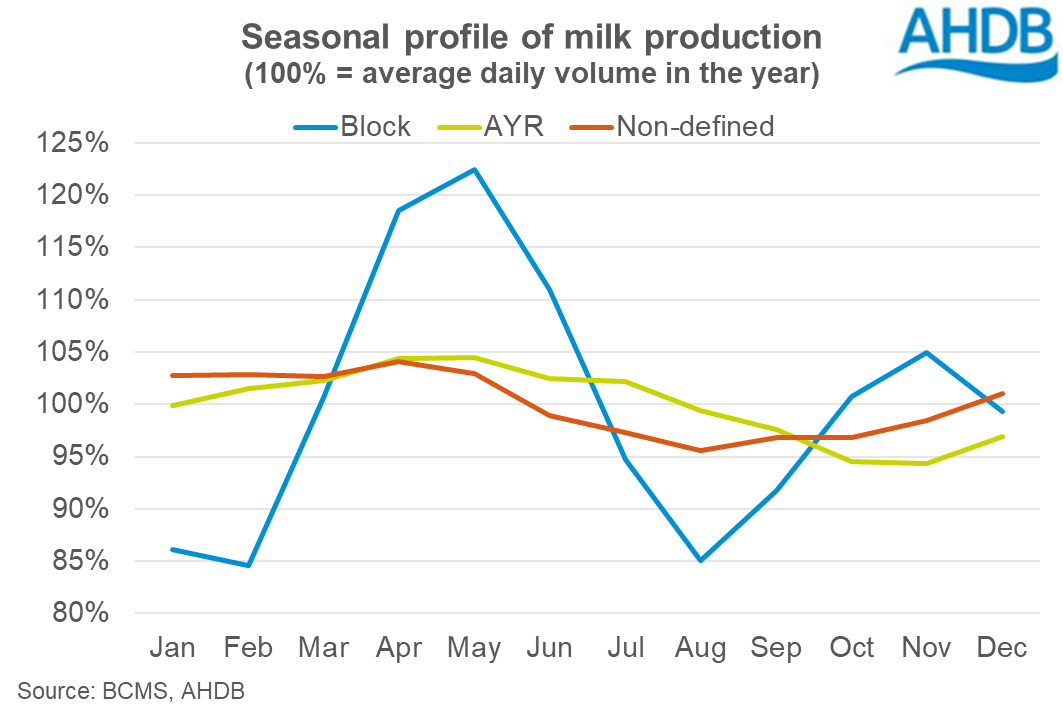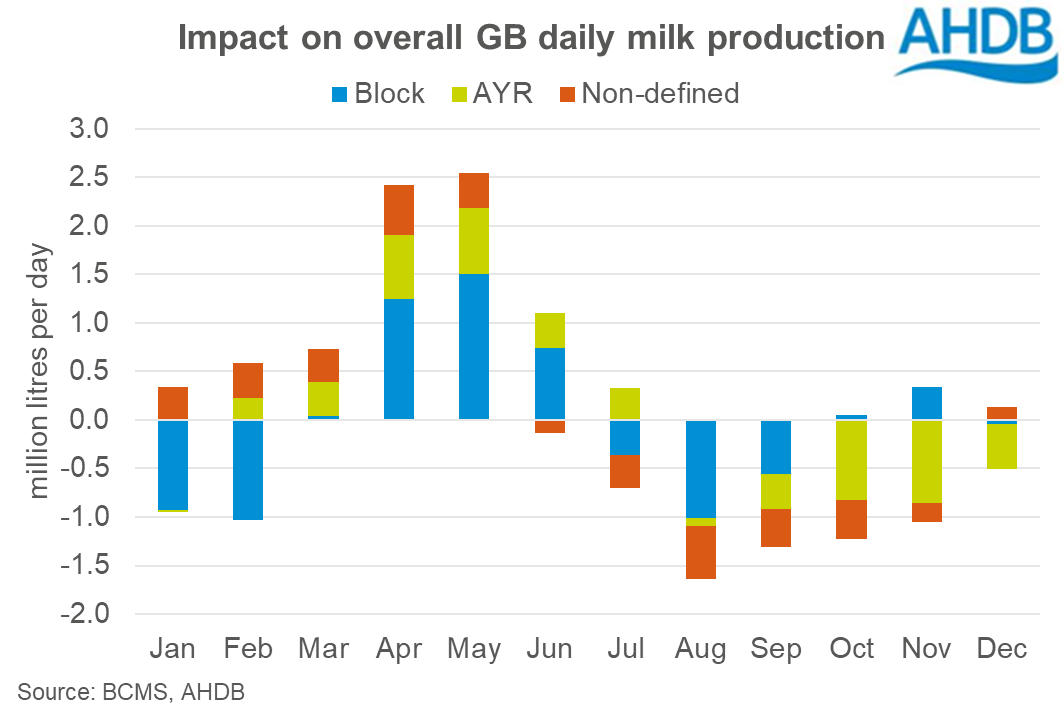The milk production profile from different calving systems
Tuesday, 14 September 2021
By Chris Gooderham
We recently published analysis on calf registrations, broken down by system. But how does the current split in calving systems impact milk production through the year? Using our Milk Forecasting Tool, we are able to estimate milk production based on the number of calvings each month.
As a group, the block calvers continue to have the most seasonal profile of milk production. A ratio of 2:1 for autumn block calvers versus spring block calvers, would give a relatively flat milk production profile overall. However, the current ratio between autumn and spring is roughly 1:1, which is driving a seasonal spring peak in milk production from the block group overall.

The profiles of the all year round (AYR) and non-defined groups are similar, and considerably flatter than those of the block calvers.
How do these profiles impact on overall GB milk volumes?
The chart below compares, for each group, the estimated milk volume each month with the annual daily average for that group. So, for example, in January it is a fairly neutral month for the AYR group. However, the block calvers produce around 0.9 million litres per day less milk in January than they do on average, while the non-defined produce 0.3 million litres per day more milk than their annual average.

All three groups are contributing to the spring peak in volumes through March to May. In August and September all groups have lower than average milk volumes. However,for the remaining months the groups help offset each other somewhat. In January and February, the volume from the block calvers is below average, but this is partly offset by the non-defined group. Whereas in November, the block calvers contribute additional milk over and above their annual daily average, unlike the other two groups.
Over recent years the seasonal trough in GB milk production has moved from October/November to August/September. The analysis by calving system helps explain how a slight shift towards block calving has been one of the main reasons for this move.

Sign up to receive the latest information from AHDB.
While AHDB seeks to ensure that the information contained on this webpage is accurate at the time of publication, no warranty is given in respect of the information and data provided. You are responsible for how you use the information. To the maximum extent permitted by law, AHDB accepts no liability for loss, damage or injury howsoever caused or suffered (including that caused by negligence) directly or indirectly in relation to the information or data provided in this publication.
All intellectual property rights in the information and data on this webpage belong to or are licensed by AHDB. You are authorised to use such information for your internal business purposes only and you must not provide this information to any other third parties, including further publication of the information, or for commercial gain in any way whatsoever without the prior written permission of AHDB for each third party disclosure, publication or commercial arrangement. For more information, please see our Terms of Use and Privacy Notice or contact the Director of Corporate Affairs at info@ahdb.org.uk © Agriculture and Horticulture Development Board. All rights reserved.

